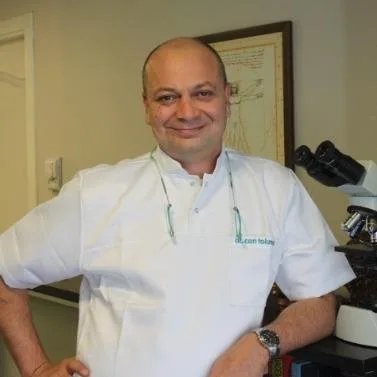Damage to a tooth’s enamel surface is referred to as tooth decay. It takes place when acids produced by oral bacteria destroy the enamel. Cavities (dental caries), which are holes in your teeth, or dental abscesses can result from tooth decay. Without treatment, dental decay can result in discomfort, infection, and even tooth loss.
The sugar in your diet can be turned into acids by the bacteria in plaque. These acids can start to harm your teeth if plaque is allowed to accumulate over time. Because of this, maintaining good oral hygiene is essential to preventing tooth decay.
According to World Health Organisation; dental caries result when plaque forms on the surface of a tooth and converts the free sugars (all sugars added to foods by the manufacturer, cook, or consumer, plus sugars naturally present in honey, syrups, and fruit juices) contained in foods and drinks into acids that destroy the tooth over time. A continued high intake of free sugars, inadequate exposure to fluoride and a lack of removal of plaque by toothbrushing can lead to caries, pain and sometimes tooth loss and infection.
What Causes Tooth Decay?
Cavities and tooth decay can be caused by hygiene practices and medical problems.
- Poor oral hygiene and not brushing or flossing regularly. By far, poor oral hygiene is one of the key factors contributing to tooth decay.
- Poor diet preferences. Patients who regularly consume a diet that consists sticky or acidic meals and beverages are increasing their risk of developing tooth decay.
- The tooth’s location.
- Digestive acid in stomach
- Frequent snacking
- Consuming high sugar containing foods
- Eating bread and other foods high in carbohydrates
- Dry Mouth
- Reflux
- Not getting sufficient fluoride
- Smoking
- Eating disorders such as bulimia and anorexia
Symptoms of tooth decay
The earliest stages of tooth decay do not have any symptoms, making them hard to detect. It causes many to miss a crucial window of opportunity, since the early stages of tooth decay can be reversed with fluoride treatments. Once tooth decay progresses to its later stages, dental restoration treatments are needed to repair any damaged teeth.
Tooth decay may not cause any pain. However, if you have dental caries you might have:
- toothache – either continuous pain keeping you awake or occasional sharp pain without an obvious cause
- tooth sensitivity – you may feel tenderness or pain when eating or drinking something hot, cold or sweet
- grey, brown or black spots appearing on your teeth
- bad breath
- an unpleasant taste in your mouth
Stages of Cavity
When a tooth is often exposed to acid, such as when you frequently eat or drink, especially foods and beverages that are high in sugar and starches, the enamel continues to lose minerals as a result of the repeated acid attacks. Mineral loss may cause a white area to show up. An early symptom of degradation is this.
At this time, tooth decay can either be stopped or reversed. Fluoride from toothpaste or other sources, along with minerals from saliva, can help the enamel heal itself. But additional minerals are lost as the tooth decay process progresses. The enamel weakens and breaks down over time, creating a cavity. A filling is required by a dentist to fix a cavity since it is lasting harm.
Stages of Tooth Decay
1 Decay in enamel
The outer coating of your teeth, known as the enamel, begins to deteriorate during the initial stage of tooth decay as a result of the presence of plaque. You may begin to notice white spots on your teeth as demineralization progresses. This is where the plaque first started wearing down the enamel on your teeth.
2 Advanced decay
The white patches will start to turn dark if your enamel is allowed to keep eroding. Now that the enamel has begun to degrade and cavities have started to form, you have advanced to the second stage of tooth decay.
3 Decay in dentin
Your dentin may later suffer harm if your cavities are not promptly treated. The portion of the tooth beneath the enamel is called the dentin. It’s far more vulnerable to acid damage because it’s softer than enamel.
4 Decay in pulp
The dentin is covered by a layer called pulp. It is the bottommost portion of your tooth and contains the blood vessels and nerves needed to support and arouse the tooth. Your tooth may start to enlarge once tooth decay has reached the pulp. Since your tooth can’t expand along with the pulp, pressure will start to build up, resulting in some pain. Pulp death, or pulp necrosis, is the final stage of pulp injury.
5 Abscess Formation
Bacteria enter the decaying pulp during this stage of tooth decay, usually resulting in infection. At some point, an abscess at the root of your tooth may develop, resulting in excruciating pain that may radiate to the rest of your mouth, gums, face, and jaw.
Is it Possible to Reverse Tooth Decay?
if caught in the early stages, is reversible. However, once the enamel of the tooth has lost too many minerals and the tooth has a cavity, it is unable to repair itself. A dentist can treat damage and prevent it from spreading further. A person can reverse tooth decay by cutting down on sugary and starchy foods and practicing good oral hygiene.
Preventing Tooth Decay
Both the enamel (the tooth’s outer coating) and the dentin layer of the tooth can be harmed by tooth decay, which is the breakdown of tooth structure.
When carbohydrates (sugars and starches) from foods like breads, cereals, milk, soda, fruits, cakes, or candy are left on the teeth, tooth rot results. Acids are produced by the digestion of these foods by bacteria that are present in the mouth. Plaque, which adheres to the teeth, is created when bacteria, acid, food particles, and saliva come together. Cavities are holes in the teeth that are caused by the acids in plaque dissolving the enamel coating.
To prevent tooth decay:
• Use a fluoride-containing toothpaste at least twice a day to brush your teeth. Brush ideally after every meal and especially before before bed.
• Use interdental cleaners or dental floss every day to brush in between your teeth.
• Use a fluoride-containing mouthwash every day. Some rinses also contain antiseptic components to aid in the destruction of plaque-causing microorganisms.
• Eat nutritious, balanced meals and avoid eating too many snacks. Avoid foods that include carbohydrates that might cause teeth surface stains, such as sweets, pretzels, and chips. If you eat anything sticky, wash your teeth right away.
• Discuss utilizing more fluoride, which fortifies teeth, with your dentist.
• Discuss with your dentist the possibility of having dental sealants, a plastic covering that is placed on the chewing surfaces of your rear teeth (molars) to prevent tooth decay.
• Drink water containing fluoridate
• Visit your dentist regularly for professional cleanings and oral exams.
Dental Treatment Options For Tooth Decay
When a tooth is seriously decaying, the dentist may decide to extract it and install an implant in its place. Even while there isn’t a 100% guarantee that rotting teeth can be fixed, there are treatments that can stop further deterioration. The severity of the cavity, however, may affect the available treatments.
The degree of the dental decay, the child’s specific condition, and other factors all factor into cavity treatment. The decay is eliminated using a range of potential treatment techniques, and the tooth is then made healthy and returned to its original, disease-free state. Additionally, whether the decay is affecting baby teeth or adult teeth often affects the specific type of treatment.
Treatment depends on the severity of tooth decay and it may include:
Fluoride: When decay is caught early, fluoride treatments can repair tooth enamel. This process is called remineralization. You may need prescription toothpaste and mouthwash, as well as fluoride treatments at the dental office.
Fillings: Once a hole forms in the tooth, dentists drill out the decayed material and fill the hole. Dental fillings are made of silver amalgam, composite resin or gold.
Root canal: A root canal treats pain from root decay. Endodontists are dental specialists who treat problems that affect a tooth’s root. During a root canal, this healthcare provider removes the pulp that contains nerve endings that cause pain.
Tooth extraction: If a root canal isn’t possible, your healthcare provider may extract (pull) the tooth. You may need a dental implant to replace a pulled permanent tooth. Implants keep teeth from shifting and changing your appearance and bite.
Istanbul Dental Clinics Statement
To avoid cavities and tooth decay, regular dental exams and proper oral hygiene are essential. Children and teenagers are now less likely to get cavities because to new dental procedures like fluoride rinses and tooth sealants. Old dental fillings from childhood may cause cavities to form around the edges in adults. Additionally, older persons are more likely to get cavities in exposed roots caused by receding gums. Consult your dentist for advice on how to safeguard your oral health and avoid cavities.
At Istanbul Dental, with our qualified team we are ready to answer your additional questions, so do not hesitate to get in touch with us . Also, get a quote to start planning your dental treatment as whole process including your VIP transfer! While gathering information and inspecting the options about the dental services, we recommend you to visit our smile gallery and see our previous patients’ sincere smiles.













